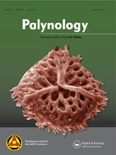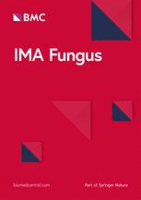
AEROBIOLOGIA
Scope & Guideline
Navigating the Air: Discoveries in Immunology and Ecology
Introduction
Aims and Scopes
- Aerobiological Monitoring:
The journal emphasizes the importance of monitoring airborne biological particles, including pollen and fungal spores, to understand their distribution, concentration, and seasonal variations. - Impact of Environmental Factors:
Research frequently explores how meteorological conditions, air pollution, and climate change affect the abundance and allergenic potential of airborne biological agents. - Health Implications:
A critical area of focus is the health impacts of bioaerosols, including their role in respiratory diseases and allergies, particularly in urban environments. - Technological Innovations:
AEROBIOLOGIA encourages studies that utilize advanced technologies, such as artificial intelligence and machine learning, for the automatic detection and monitoring of airborne particles. - Interdisciplinary Approaches:
The journal promotes interdisciplinary research by integrating insights from environmental science, microbiology, public health, and meteorology to address complex aerobiological challenges.
Trending and Emerging
- Impact of Climate Change on Aerobiology:
Growing concerns over climate change are leading to increased research on how changing weather patterns affect pollen and fungal spore dynamics, as well as their implications for health. - Bioaerosol and Pathogen Interactions:
There is a rising trend in studies examining the relationship between airborne pathogens and environmental factors, particularly in the context of public health and pandemics. - Advanced Monitoring Techniques:
Emerging methodologies, including the use of deep learning and artificial intelligence for automatic pollen detection, are gaining traction, reflecting a push towards enhanced monitoring capabilities. - Indoor Air Quality and Health:
Research on bioaerosols in indoor environments is becoming more prevalent, focusing on their implications for health in various settings, including hospitals and public spaces. - Global Perspectives on Aerobiology:
An increasing number of studies are addressing aerobiological issues in diverse geographical contexts, emphasizing the need for a global understanding of bioaerosol dynamics.
Declining or Waning
- Traditional Pollen Identification Techniques:
The reliance on manual pollen identification methods is decreasing as automated and machine learning techniques gain popularity, leading to a waning interest in traditional methodologies. - Historical Aerobiological Trends:
Research focusing on long-term historical data of pollen seasons is becoming less frequent, possibly due to the shift towards real-time monitoring and immediate health implications. - Localized Studies without Broader Implications:
There is a noticeable decline in studies that focus solely on localized aerobiological phenomena without connecting them to broader environmental or health impacts.
Similar Journals

Current Fungal Infection Reports
Advancing the understanding of fungal infections.Current Fungal Infection Reports is an essential academic journal dedicated to the rapidly evolving field of mycology, specifically focusing on the diagnosis, treatment, and epidemiology of fungal infections. Published by Springer, this journal aims to provide a comprehensive platform for researchers, healthcare professionals, and scholars to disseminate groundbreaking findings and insights into the complexities surrounding fungal diseases. With an ISSN of 1936-3761 and an E-ISSN of 1936-377X, the journal is recognized in the Q3 category for Infectious Diseases as of 2023 and holds a Scopus rank of #199 out of 344 in its field, showcasing its growing influence. Although not currently open access, Current Fungal Infection Reports remains an important resource for those wishing to stay updated on key developments and trends within this critical area of global health. Through its commitment to advancing knowledge and fostering academic exchange, the journal plays a crucial role in combating the challenges posed by fungal infections, making it a must-read for anyone involved in infectious disease research and treatment.

PALYNOLOGY
Unveiling Insights from Fossilized Pollen and SporesPALYNOLOGY, published by Taylor & Francis Inc in the United Kingdom, is a prominent academic journal focused on the field of paleontology, particularly the study of fossilized pollen and spores. Established in 1977, this journal continues to thrive, with comprehensive coverage of significant advancements and research findings in palynology, highlighting its integral role in understanding past ecosystems, climate changes, and evolutionary processes. With an impressive Scopus ranking of #34 out of 113 in the Earth and Planetary Sciences category, and a notable Q2 classification, PALYNOLOGY serves as a vital resource for researchers, professionals, and students committed to deepening their knowledge of paleontological studies. Although currently not Open Access, the journal remains dedicated to delivering valuable insights and fostering scholarly communication in the field, making it an essential read for anyone invested in the complexities of Earth’s biological history.

JOURNAL OF THE HISTORY OF BIOLOGY
Illuminating the Evolution of Life SciencesJOURNAL OF THE HISTORY OF BIOLOGY, published by Springer, stands as a vital academic resource devoted to examining the historical development of biological science and its philosophical dimensions. This esteemed journal, which has been in continuous publication since 1968 and encompasses research through 2024, is recognized for its significant contributions to the fields of Agricultural and Biological Sciences, and the History and Philosophy of Science, proudly holding a Q2 ranking in both categories as of 2023. With an ISSN of 0022-5010 and an E-ISSN of 1573-0387, it serves a diverse audience of researchers, professionals, and students interested in the interplay between biological advancements and historical context. The journal’s particular emphasis on interdisciplinary investigation provides a platform for innovative scholarship that enriches our understanding of not only the science itself but also its societal implications. While it does not currently offer open access, the rigor and reputation of the journal underscore its importance as a leading publication in the academic landscape of biological history.

IMA Fungus
Fostering Innovation in Ecological Research.IMA Fungus is an esteemed open-access journal published by BMC, dedicated to advancing research in the fields of fungi, plant sciences, and ecological systems. With an ISSN of 2210-6340 and E-ISSN 2210-6359, this journal has been an influential platform since its inception in 2010, contributing significantly to the scientific community in the United States and beyond. The journal’s remarkable impact can be seen in its Q1 quartile rankings across multiple categories, including Agricultural and Biological Sciences, Ecology, Evolution, Behavior and Systematics, and Plant Science, positioning it among the top literary sources in these fields. Notably, IMA Fungus holds impressive Scopus rankings, with the Agricultural and Biological Sciences category placing it in the 98th percentile, evidencing its crucial role in disseminating impactful research. Given its commitment to fostering accessibility and collaboration, IMA Fungus continues to be an invaluable resource for researchers, professionals, and students aiming to explore and understand the complex roles of fungi within various ecosystems.

ACS Environmental Au
Empowering Global Discourse on Environmental ChallengesACS Environmental Au is a leading open-access journal published by the American Chemical Society (ACS), dedicated to advancing research in the environmental sciences. Since its inception in 2021, this journal has quickly established itself in the highly competitive landscape of environmental research, achieving Q1 status across multiple categories—Environmental Engineering, Environmental Science (Miscellaneous), and Water Science and Technology. With a strong Scopus ranking, including Rank #38 in Water Science and Technology representing the top 85th percentile, ACS Environmental Au serves as a vital platform for disseminating high-quality research and innovative solutions to pressing environmental challenges. It is particularly notable for its commitment to accessibility, providing researchers, professionals, and students with open access to critical findings that support sustainable development and environmental stewardship. This journal not only emphasizes rigorous scientific inquiry but also seeks to provoke thoughtful discourse and collaborative initiatives that address global environmental issues.

NJAS-Impact in Agricultural and Life Sciences
Empowering the dialogue on life sciences and agricultural advancements.NJAS-Impact in Agricultural and Life Sciences is a pivotal open-access journal, published by Taylor & Francis Ltd, focusing on the interdisciplinary nexus between agricultural practices and life sciences. Anchored in the United Kingdom, this journal aims to provide a comprehensive platform for the dissemination of innovative research that addresses critical challenges in environmental sustainability, agricultural productivity, and biological advancements. With its inaugural issue dated from 2023 to 2024, NJAS prominently features the latest empirical studies, reviews, and theoretical contributions that enrich existing knowledge and provoke thought among researchers and practitioners alike. Although currently ranking within the lower percentiles across various Scopus categories, the journal aspires to establish itself as a significant contributor to the dialogue on agricultural and environmental sciences. As scholars in these fields seek to bridge the gaps in understanding, NJAS invites submission from diverse perspectives, underscoring the importance of collaborative knowledge-building in addressing the complexities of our changing global landscape.

Communications Biology
Pioneering Research for a Sustainable FutureCommunications Biology, published by NATURE PORTFOLIO, is a premier open-access journal that has been at the forefront of biological sciences since its inception in 2018. With a remarkable impact factor and a strong reputation in the field, it has achieved prestigious Q1 rankings in Agricultural and Biological Sciences, Biochemistry, Genetics and Molecular Biology, and Medicine, highlighting its significance in disseminating cutting-edge research. The journal is renowned for its focus on innovative, interdisciplinary biological studies, making it an essential platform for researchers, professionals, and students alike, eager to contribute to and engage with the latest discoveries. With its commitment to accessibility, all articles published are openly available to the global research community, furthering the collaboration and advancement of knowledge in the biological sciences. For more information, access options, and submission guidelines, please visit the journal's website.

Zeitschrift fur Pneumologie
Catalyzing Change in Pulmonary Health ResearchZeitschrift für Pneumologie is a pivotal journal in the field of Pulmonary and Respiratory Medicine, published by Springer Heidelberg, a renowned name in academic publishing. With its ISSN number 2731-7404, it serves as a vital platform for disseminating innovative research and clinical studies relevant to lung health and diseases. This German-based journal aims to bridge the gap between research and practice, encouraging submissions that advance knowledge in respiratory medicine, including pathophysiology, treatment modalities, and patient care strategies. Although currently categorized in the Q4 quartile within its field, its commitment to quality research and emerging insights positions it as an essential resource for researchers, healthcare professionals, and students dedicated to improving respiratory health. The journal operates within the convergence period from 2022 to 2024, promising a dynamic evolution of its content. With limited open access availability, it encourages readership and contribution from its audience, fostering a collaborative academic environment.

ENVIRONMENTAL HEALTH PERSPECTIVES
Innovating solutions through rigorous environmental health research.Environmental Health Perspectives (EHP) is a premier open-access journal published by the U.S. Department of Health and Human Services, Public Health Science, dedicated to publishing rigorous and impactful research in the field of environmental health. Since its inception in 1972, EHP has become a leading platform for disseminating knowledge on the interactions between the environment and human health, making significant contributions to the fields of toxicology and public health. With an impressive impact factor and a Q1 ranking in both Health, Toxicology and Mutagenesis and Public Health, Environmental and Occupational Health categories, EHP ranks among the top journals globally, reflecting its high citation and visibility within the academic community. Researchers, professionals, and students alike will find a wealth of vital information within its pages, as EHP covers a wide array of topics related to environmental exposures, health outcomes, and policy implications. Furthermore, EHP engages with a global audience through its commitment to open access, ensuring that critical research is available to all, enhancing the collective understanding of environmental health issues since 1972.

Environmental Science-Atmospheres
Exploring the intersection of science and environmental health.Environmental Science-Atmospheres is an emerging and dynamic open-access journal published by the Royal Society of Chemistry, dedicated to advancing research in the fields of environmental science and atmosphere-related studies. Launched in 2021, this journal serves as an essential platform for disseminating cutting-edge findings that address the complexities of atmospheric phenomena, pollution impacts, and overall environmental health. With a commendable Q2 ranking across various categories including Environmental Chemistry and Pollution, it solidifies its position as a vital resource for researchers, professionals, and students seeking to contribute to the understanding of environmental dynamics. The journal is indexed in Scopus, providing its contributors with significant visibility within the scientific community. Operating under a fully Open Access model since its inception, Environmental Science-Atmospheres ensures that research outputs are freely accessible, fostering collaboration and knowledge sharing essential for tackling global environmental challenges.